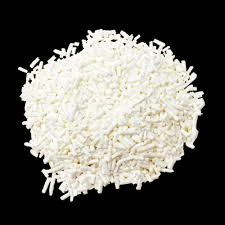
Exploring the Uses and Benefits of Malic Acid as a Food Additive
The Role of Malic Acid as a Food Additive
Malic acid is a naturally occurring organic compound that plays a substantial role in the food industry as an additive. Its chemical formula, C4H6O5, indicates that it belongs to the family of dicarboxylic acids, which are characterized by two carboxyl groups in their structures. Malic acid is primarily derived from apples, where it got its name (from the Latin word malum meaning apple). While it is present in various fruits, it can also be synthetically produced, making it a versatile ingredient widely used across different food products.
One of the primary functions of malic acid as a food additive is to enhance the flavor profile of various products. It possesses a tart and sour taste, which can help balance sweetness in food items. This characteristic makes malic acid particularly useful in the formulation of candies, soft drinks, and fruit-flavored products, where a refreshing tang is desired. By incorporating malic acid, food manufacturers can achieve a more complex and appealing flavor profile, enhancing the overall sensory experience for consumers.
The Role of Malic Acid as a Food Additive
Malic acid is also a crucial component in the production of certain food textures. When used in conjunction with other food additives, it can improve the stability and mouthfeel of products. For instance, in baked goods, it can enhance dough elasticity, leading to a better rise and texture upon baking. Its ability to chelate metal ions further contributes to its versatile applications, as it can help improve the texture and quality of various food products.
malic acid food additive

Another notable aspect of malic acid is its role as a natural preservative. Unlike synthetic preservatives that may come with negative perceptions among consumers, malic acid is generally regarded as safe and is often seen as a healthier alternative. Consumers today are more conscious of the ingredients in their food, leading to a preference for natural additives over artificial ones. The use of malic acid aligns with this trend, providing a clean-label solution that adds value to products without compromising on safety or quality.
The food industry is not the only sector that benefits from malic acid. Its applications extend to the beverage industry, particularly in carbonated drinks. Malic acid is commonly used to create a refreshing tartness that consumers associate with fruit flavors. Its presence in soft drinks contributes to a well-rounded flavor that enhances the overall drinking experience. Additionally, malic acid can help stabilize flavors, ensuring that they remain consistent over time.
Moreover, malic acid is not limited to industry applications. Its natural occurrence in fruits makes it a popular choice among health-conscious consumers who seek out products containing this organic acid. It has gained attention for its potential health benefits, including its role in energy production within the body. Some studies suggest that malic acid may help reduce muscle pain and fatigue, making it a subject of interest in sports nutrition.
In conclusion, malic acid serves as a multifaceted food additive that enhances flavor, regulates pH, improves texture, and acts as a natural preservative. Its natural origin, primarily from apples, speaks to the growing consumer demand for clean-label ingredients. As the food industry continues to evolve, malic acid remains a vital component in meeting both safety and quality standards while catering to health-conscious consumers. Whether found in a tangy candy, a refreshing beverage, or a flavorful sauce, malic acid is an integral ingredient that contributes to the enjoyment and safety of many food products today. Its enduring presence in the food industry underscores its valuable properties and adaptability in enhancing the overall culinary experience.
-
Buy High-Quality Trichloroisocyanuric Acid for Sale | TCCA 90% SupplierNewsAug.30,2025
-
Pure Sodium Dichloroisocyanurate Dihydrate | Powerful DisinfectantNewsAug.29,2025
-
Industrial Chemicals: Quality & Purity for Every IndustryNewsAug.28,2025
-
Nitrile Rubber Honoring Strict Production StandardsNewsAug.22,2025
-
Aspartame Ingredients Honoring Food Safety ValuesNewsAug.22,2025
-
Fertilizer for Balanced Plant NutritionNewsAug.22,2025
-
Cyanide Gold Processing with High Purity AdditivesNewsAug.22,2025
Hebei Tenger Chemical Technology Co., Ltd. focuses on the chemical industry and is committed to the export service of chemical raw materials.
-

view more DiethanolisopropanolamineIn the ever-growing field of chemical solutions, diethanolisopropanolamine (DEIPA) stands out as a versatile and important compound. Due to its unique chemical structure and properties, DEIPA is of interest to various industries including construction, personal care, and agriculture. -

view more TriisopropanolamineTriisopropanolamine (TIPA) alkanol amine substance, is a kind of alcohol amine compound with amino and alcohol hydroxyl, and because of its molecules contains both amino and hydroxyl. -

view more Tetramethyl Thiuram DisulfideTetramethyl thiuram disulfide, also known as TMTD, is a white to light-yellow powder with a distinct sulfur-like odor. It is soluble in organic solvents such as benzene, acetone, and ethyl acetate, making it highly versatile for use in different formulations. TMTD is known for its excellent vulcanization acceleration properties, which makes it a key ingredient in the production of rubber products. Additionally, it acts as an effective fungicide and bactericide, making it valuable in agricultural applications. Its high purity and stability ensure consistent performance, making it a preferred choice for manufacturers across various industries.





